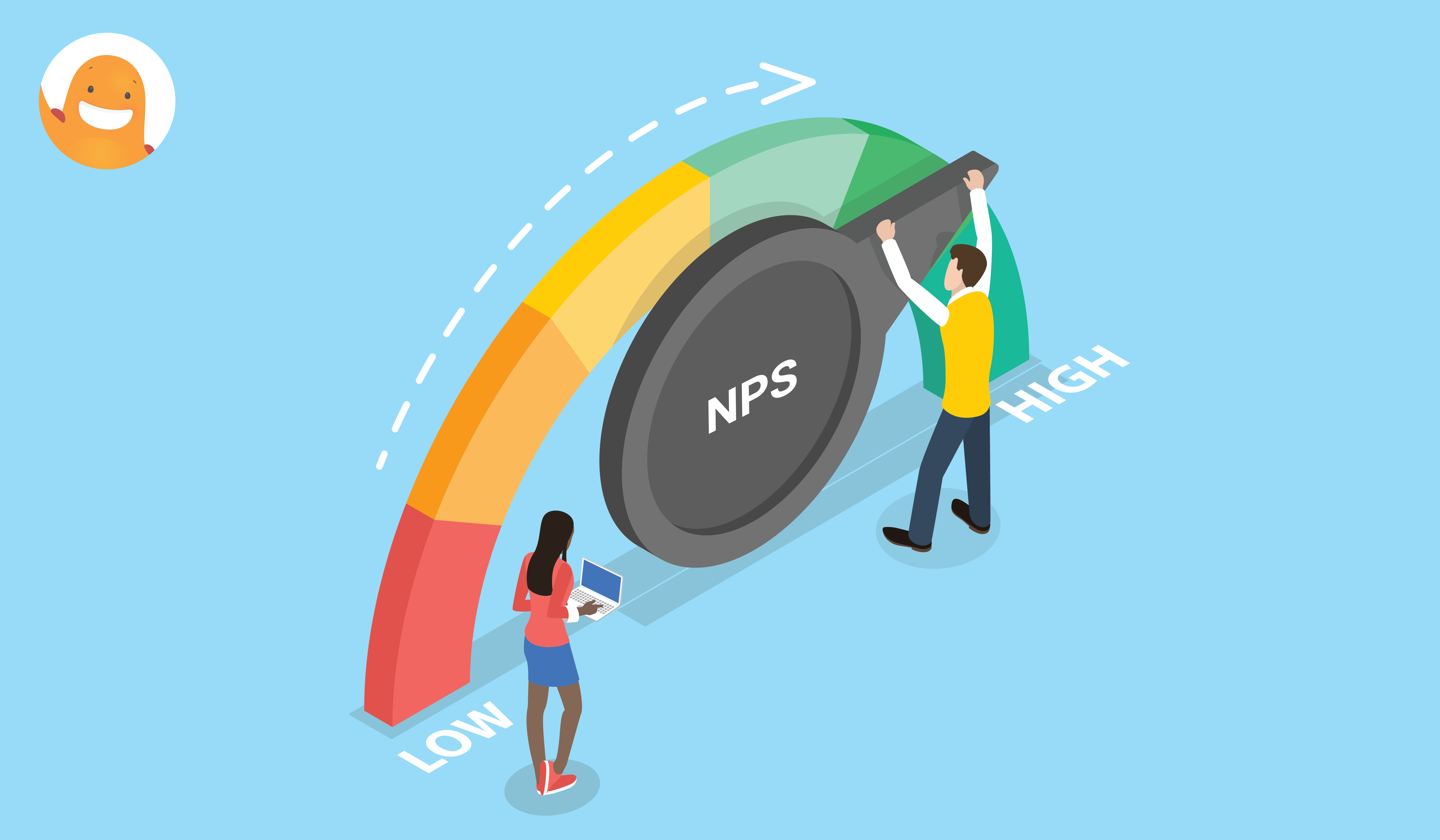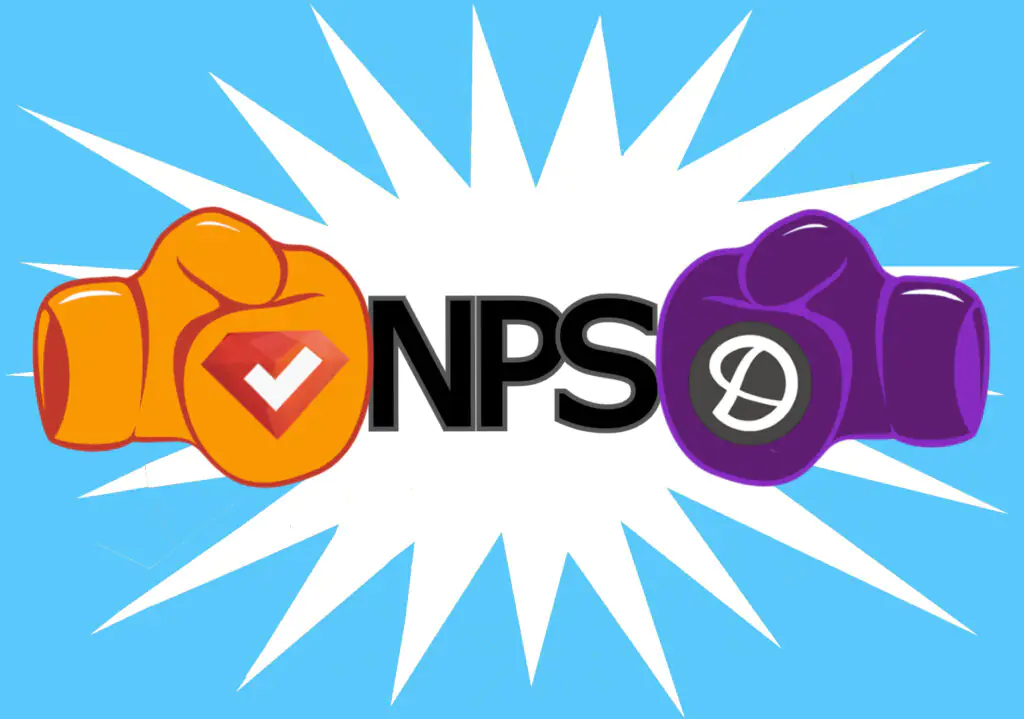sAll business owners understand the importance of good customer relationships. A good customer is not only less expensive to keep than acquiring a new one, but they can also be loyal brand advocates, touting the benefits of your products or services and inspiring others to make purchases that boost your bottom line.
To gauge the loyalty of their customers, many companies today use the Net Promoter or Net Promoter Score (NPS). NPS has been widely adopted, with more than 75% of Fortune 1000 companies adopting the metric. An NPS survey asks customers how likely they would be to recommend your product or service to a friend or colleague, on a scale of one to ten. The resulting data helps companies improve their products or services to increase NPS, thus building customer loyalty and creating enthusiastic brand advocates. Respondents fall into three categories: Unless you have a perfect score, a feat very few companies ever achieve, you should always want to be improving your NPS. That means keeping promoters happy and turning passives into promoters. For detractors, depending on their score, you may try to convert them to promoters, or simply hope to solve their problems to keep them from speaking negatively about your company and damaging your reputation. Improving net promoter score takes some commitment, but it can pay off big time! Here are eight ways to begin improving NPS. To improve NPS, it’s imperative that everyone in the organization understands the goal; it needs to be a shared vision. Today, too many companies focus solely on the bottom line. Instead, put some emphasis on improving NPS, which will result in bottom-line improvements. You should also be sure to use NPS feedback to train employees on what is or isn’t working. Customers generally have numerous touchpoints with your company, from browsing your website to receiving your product. Each touchpoint needs to uphold the same standard of excellence; for example, a customer’s experience could be a 10 across the board, but then a shipping delay causes them frustration. This can tank your NPS score. By gaining internal commitment across the board, you can ensure that each step of the buyers’ journey is a smooth one. Promoters are likely to tell others about how wonderful your company is; that’s free advertising! So, you might want to consider taking things a step further and empowering them as brand advocates. By recruiting them into an affiliate program, they’re incentivized to promote your company above and beyond what they’re already doing. All you need to do is offer bonuses when they’ve successfully recruited someone. A good explanation of these programs is here. It’s tempting to just focus on promoters since passives don’t influence your NPS data. However, passives can sometimes be swayed to your side (thus becoming promoters), if you treat them right. You should engage them in discussion and show them that you care in order to tip the balance in your favor. Even if you have to offer up a freebie to get them to try your products or services again, it can be more than worth the cost if it turns them into promoters or brand advocates. You may think an NPS detractor is a lost cause and pay them no mind; this is a mistake. With the right amount of attention, you may be able to sway the highest-scoring detractors to your side, turning them into promoters who boost your net promoter score, or at the very least, passives who won’t bring your score down. And, while it may not impact your score, fixing any issues a detractor has can stop them from bad-mouthing your company to others online or in-person (remember, their negativity could turn your passives into detractors). You can also learn a lot from detractors and discover opportunities for improvement that may optimize the customer experience for passives too; turning them into promoters. Customers like to know that they have a voice. By responding to complaints in a timely and thoughtful manner, you can let them know that you care about their opinion and will always do your best to resolve any issues. This helps maintain promoters, and can sway passives and possibly even detractors to your side, giving your NPS a boost! Reducing response time is key to improving NPS. If a customer emails you, they want to hear back soon (strive for one business day). If they call you, they don’t want to enter an endless maze of automated messaging systems; they want to connect with a real person who can assist them right away. So, be sure to make it easy for customers to reach out and get a response. Just because you had a great score on your initial NPS survey, doesn’t mean it will stay that way. It’s important to continuously monitor your NPS to be sure you’re not losing promoters or gaining detractors. If you are, follow-up questions about what went wrong or what you can do better next time shows that you care, and can give you insight into areas of improvement. Improving net promoter score should be a top priority for most companies…how about yours? If you’re looking to boost your net promoter score, the first thing you need to do is survey your customers and understand the three types of NPS respondents. Then, you can follow our eight tips to improve NPS. SurveyLegend has worked with some of the biggest brands across numerous industries, helping them obtain and monitor their NPS. We can help you too—and even do the calculations for you! On your Live Analytics page, you will be able to monitor your Net Promoter Score as it develops over time—and in real-time. Check out our Net Promoter Score template here and read more in our Ultimate Guide to NPS and NPS Surveys. Have some other ideas about how to raise your NPS? We’d love to hear them! Share them with us and our readers in the comments. A Net Promoter Score (NPS) is a customer loyalty score ranging from -100 to 100. More than 75% of Fortune 1000 companies use the NPS metric. NPS can be improved by gaining internal company commitment, being consistent throughout the buyers’ journey, engaging with respondents, responding to complaints, reducing response time, and through constant NPS monitoring. You can send NPS surveys through email using online survey platforms such as SurveyLegend.Types of NPS Respondents
8 Ways to Improve NPS
1. Gain Internal Commitment
2. Be Consistent Throughout the Buyers’ Journey
3. Make Promotion Easier
4. Engage with Passives
5. Engage with Detractors
6. Respond to Complaints
7. Reduce Response Time
8. Monitor Your NPS
Conclusion
Frequently Asked Questions (FAQs)
What is an NPS?
How many companies use NPS surveys?
How can you improve NPS?
How can you send an NPS survey?




